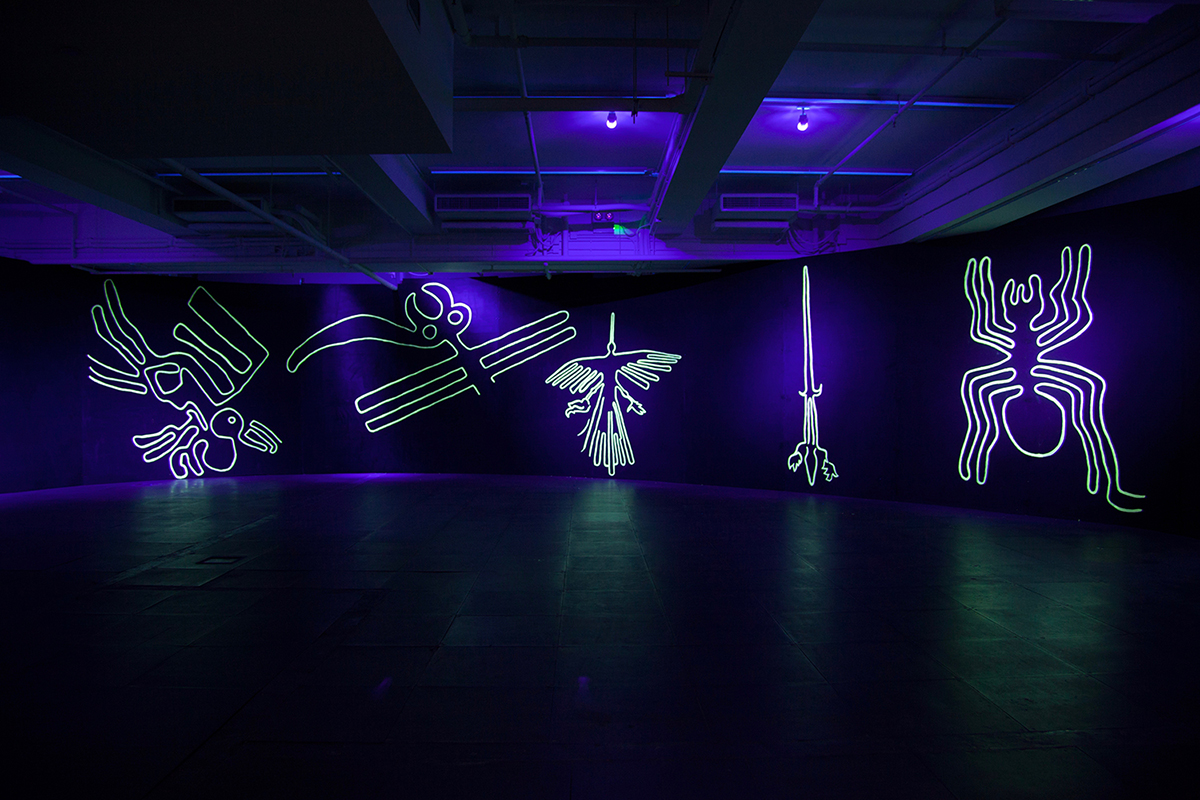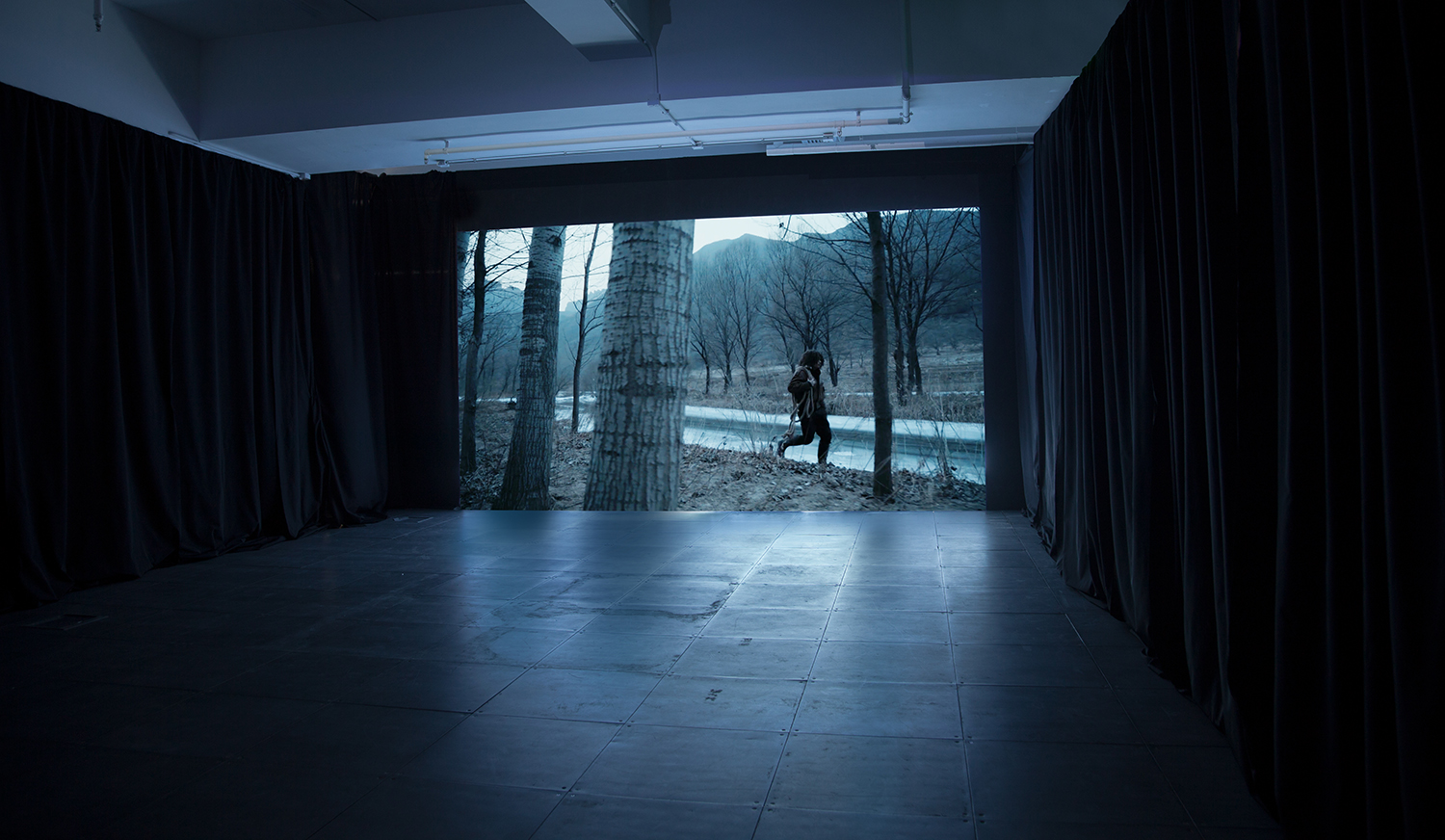Shows
Liang Ban’s “Diary of a Pioneer”


Our forebears have created breathtaking wonders, from the Great Wall in China that took centuries to erect and extend, to the ceremonial capital Persepolis, located near what is now Shiraz in Iran. Some of these ancient monuments have been restored to give us tastes of their former glory. Others lie in ruin due to neglect or power transfers. A few have been damaged or destroyed by callousness or carelessness, as was the case for Peru’s Nazca Lines—which some believe were made by extraterrestrials—when a truck driver veered off the Pan-American Highway and drove over one of the pre-Columbian geoglyphs on January 27.

On the same day, Beijing-based artist Liang Ban’s “Diary of a Pioneer” opened at de Sarthe Gallery’s Hong Kong space. Transforming part of the exhibition area was Neon Wilderness: Nazca Lines (2018), which comprises duplicates of the Lines on a curved wall, rendered in phosphorescent paint. Ultraviolet light sources made the ancient patterns glow. If you were to hold your hand up before the images for a few seconds and then lift it, a shadow would remain over the section, before the darkened area slowly shifted back to its former brightness. Unlike those in Peru, Liang’s Lines could heal themselves. We understand the workings here, and the artist’s input is unmistakably present. Yet doubt remains regarding the origins of the Lines in Peru due to their scale. Even though we are exposed to the accomplishments of humankind every day, some choose to accept that otherworldly beings are the driving force behind our great works.

Another set of line drawings flashed on two screens in Good Times Bad Times (2017), which shows roughly sketched portraits of male celebrities, young and old. On the left, we see icons who were popular during the “good times” of booming economies, including Justin Bieber, for instance. Their features are outlined in red—the color of stock tickers in China showing share prices that are shooting upward. On the right, we see entertainers with rougher features, such as Ben Kingsley and Harvey Keitel, sketched in the same green of tickers indicating diving stocks. The division references American psychologist Terry F. Pettijohn’s theory that we choose our idols based on how flush our bank accounts are: the more money we have, the more comfortable our lives are, and the softer our icons’ features will be. It isn’t a new idea that popular culture is shaped by our economies, though when the artist plucks faces from the screens that surround us and puts each into one of two baskets, it does make us pause to consider the forces that shape our entertainment.

Liang also shifts our attention to the devices that deliver round-the-clock distractions, skewering our reliance on a 21st-century multitool. Pirate Utopias (2018) is an installation with a fake palm tree that has been painted black, rooted in a bed of white sand. Leaning against the trunk is a flat panel display showing a video, in which we see a vagabond—played by the artist—attempting to harvest a coconut hanging from a tree on a beach. He shakes the tree, to no avail, then throws his sandals—one at a time—at his bounty, hitting only air. Before he resigns, he pulls out a camera phone from his pocket, takes a picture of the coconut, and shakes his phone. The hard-shelled fruit falls, hitting his cranium.

The same vagabond makes an appearance deeper in the gallery. In the video Arrested Lightning (2018), we see him trudging along a road somewhere on the outskirts of Beijing. Patches of melting snow are everywhere. Rope is coiled around his body. The man crosses a stream and scales a hill. The sky is sooty, and a storm is rolling in. As lightning flashes, the wanderer tosses his lasso toward the sky, and for a freeze-frame instant, we see the loop crossing with the electric bolt. Has he truly harnessed lightning? The screen goes dark, and then we see him at the beginning of his journey again.
Everything about “Diary of a Pioneer” was absurd. A phone brings food, but in an unexpected, invisible way. Instead of trusting the ingenuity of humanity, it’s easier for some to believe that aliens left graffiti on Earth. The faces on tabloid covers might tell us how healthy our economic systems are. Elemental natural forces appear to be tamable with just a bit of imagination, but only for a transient moment. These notes might sound preposterous, but none of them deviate from reality. Ever droll, Liang offers sardonic observations about our time, leading our vision from a tropical beach, to snowy hills, and to the starry skies too.
Liang Ban’s “Diary of a Pioneer” is on view until March 17, 2018.







